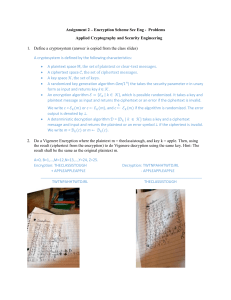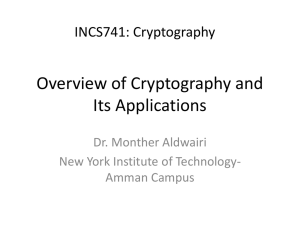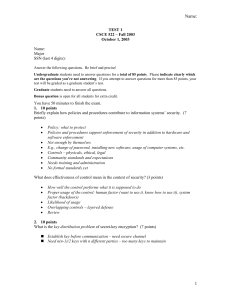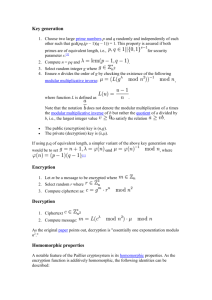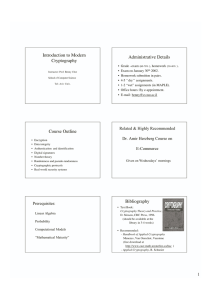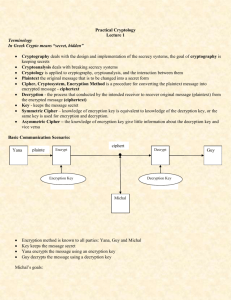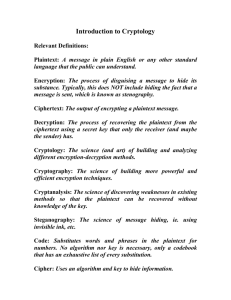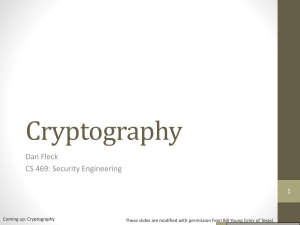HW2_Solutions
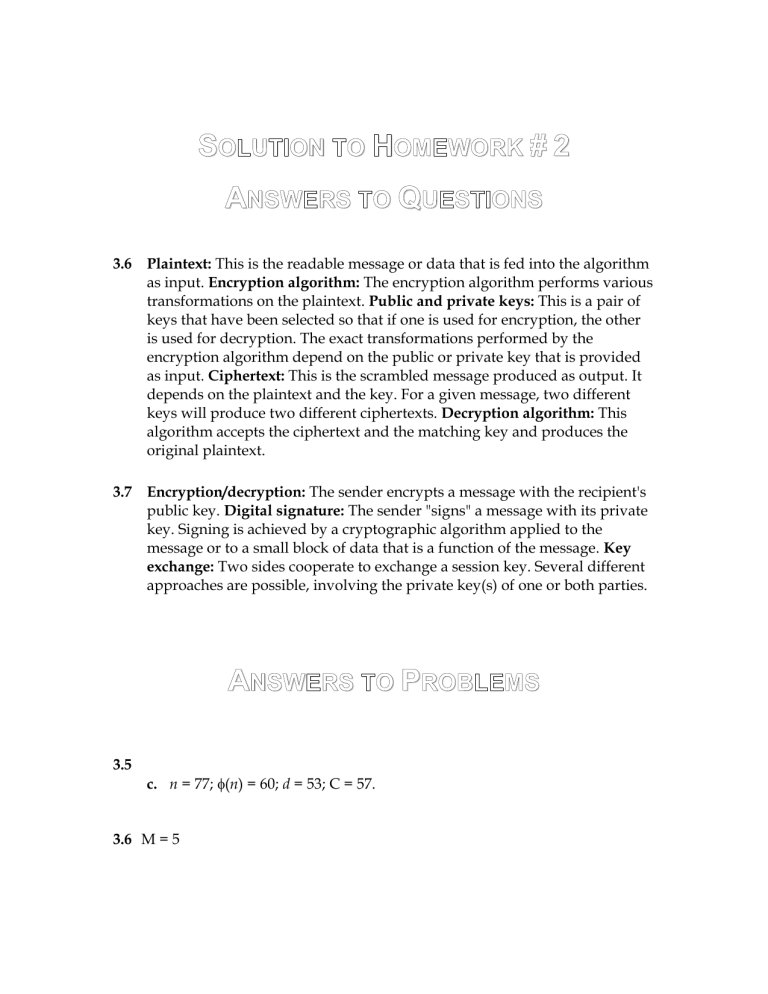
S
OLUTION TO
H
OMEWORK
# 2
A
NSWERS TO
Q
UESTIONS
3.6 Plaintext: This is the readable message or data that is fed into the algorithm as input. Encryption algorithm: The encryption algorithm performs various transformations on the plaintext. Public and private keys: This is a pair of keys that have been selected so that if one is used for encryption, the other is used for decryption. The exact transformations performed by the encryption algorithm depend on the public or private key that is provided as input. Ciphertext: This is the scrambled message produced as output. It depends on the plaintext and the key. For a given message, two different keys will produce two different ciphertexts. Decryption algorithm: This algorithm accepts the ciphertext and the matching key and produces the original plaintext.
3.7 Encryption/decryption: The sender encrypts a message with the recipient's public key. Digital signature: The sender "signs" a message with its private key. Signing is achieved by a cryptographic algorithm applied to the message or to a small block of data that is a function of the message. Key
exchange: Two sides cooperate to exchange a session key. Several different approaches are possible, involving the private key(s) of one or both parties.
A
NSWERS TO
P
ROBLEMS
3.5
c. n = 77; (n) = 60; d = 53; C = 57.
3.6 M = 5
3.8 Yes. If a plaintext block has a common factor with n modulo n then the encoded block will also have a common factor with n modulo n. Because we encode blocks which are smaller than pq, the factor must be p or q and the plaintext block must be a multiple of p or q. We can test each block for primality. If prime, it is p or q. In this case we divide into n to find the other factor. If not prime, we factor it and try the factors as divisors of n.

